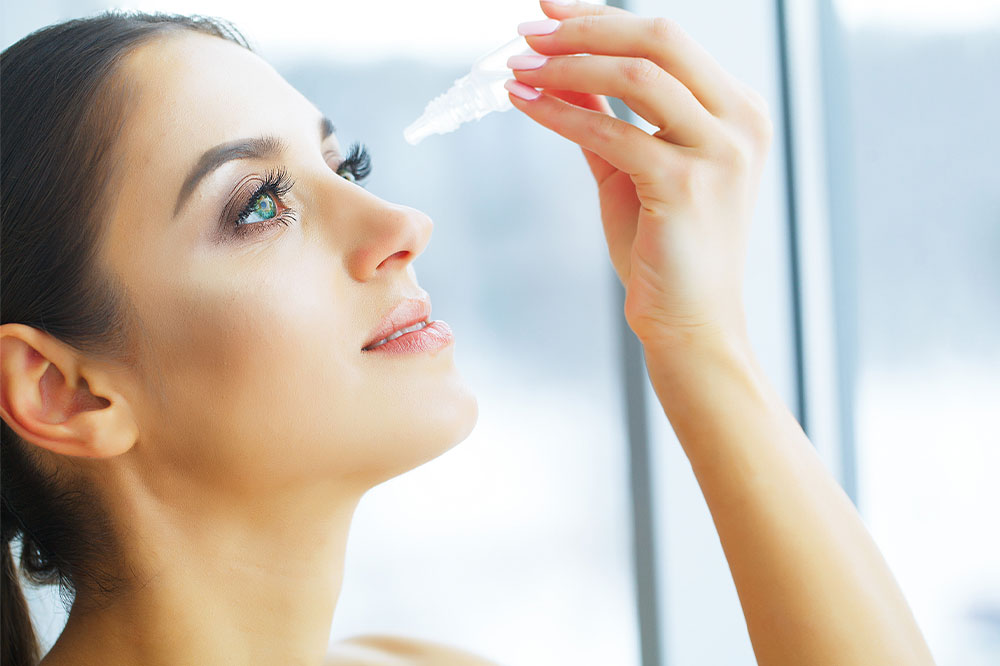
Dry eyes – Causes, symptoms, and management options
Dry eyes are a common condition in which the tears in the eyes are unable to provide adequate lubrication. The eyes contain natural tears, water, oils, and mucus. They help with lubrication, moisture retention, and infection prevention. Inadequate tear production can result in irritation and surface damage to the eyes. It also causes a burning sensation and eye discomfort. Here is a list of the symptoms, causes, treatments, and more.
Causes of dry eyes
There are numerous causes of dry eyes. It could be caused by a hormonal imbalance, an autoimmune disorder, an inflamed eye gland, or an allergy. It can also be caused by a decrease in tear production or an increase in tear evaporation.
Excessive tear evaporation
This condition occurs when the oil film formed by the tiny glands on the edges of the eyes becomes clogged. People with rosacea or other skin conditions frequently experience this blockage. Common reasons for excessive tear evaporation include eyelid difficulties such as ectropion (turning outward) and inversion (turning inward) (entropion), eye irritation, topical eye drops with preservatives, wind or dry air, lack of vitamin A, blinking less frequently, which is a symptom of several diseases, like Parkinson’s disease, and excessive exposure to gadgets or screen time.
Reduced tear production
This is caused by a decrease in the production of liquid tears, also known as aqueous fluid. Tear production is frequently reduced because of aging, Sjogren’s syndrome, allergic rhinitis, thyroid issues, vitamin A deficiency, certain prescriptions like antidepressants, acne, birth control, high blood pressure, and corneal nerve sensitivity, which is induced by contact lens use, nerve injury, or laser eye surgery.
Symptoms of dry eyes
The signs and symptoms that usually affect both eyes are stinging, burning, itching, mucous stringiness in or around your eyes, sensitivity to light, redness, a feeling of obstruction, difficulty wearing contact lenses, difficulty driving at night, watery eyes, vision haziness, or eye fatigue.
Prevention of dry eyes
Do not blow directly into someone’s eyes if they have dry eyes. Prevent heat or air from entering the eyes from air conditioners, fans, or car heaters. It is recommended to use a humidifier during dry seasons or winters to help retain moisture in the air, which can be soothing to the eyes. When outdoors, one must wear sunglasses and other protective gear to prevent the direct impact of warm, dry air on the eyes. When studying or working on a computer screen, take frequent breaks to release stress. Blink frequently or splash water directly into the eye. Place the computer screen below the level of the eyes to prevent the need to open wider eyes to view the display.
Treatment for dry eyes
Anti-inflammatory prescriptions
Inflammation around the eyelids can prevent oil glands from secreting tears. In addition to some antibiotics, doctors may advise using eye drops or ointments to help retain moisture.
Lacrimal plugs
In this procedure, the drainage holes in the eye’s cornea are blocked using plugs. This procedure is painless, reversible, and decreases tear evaporation. If the problem is serious, plugs may be used permanently.
Eye drops and ointments
Some eye drops can be used to provide more lubrication and moisture to the eyes. To eliminate oil and bacteria from the eyelids, use an eyelid cleanser. Apply warm compresses to the eyes and gently massage to relieve pain.




